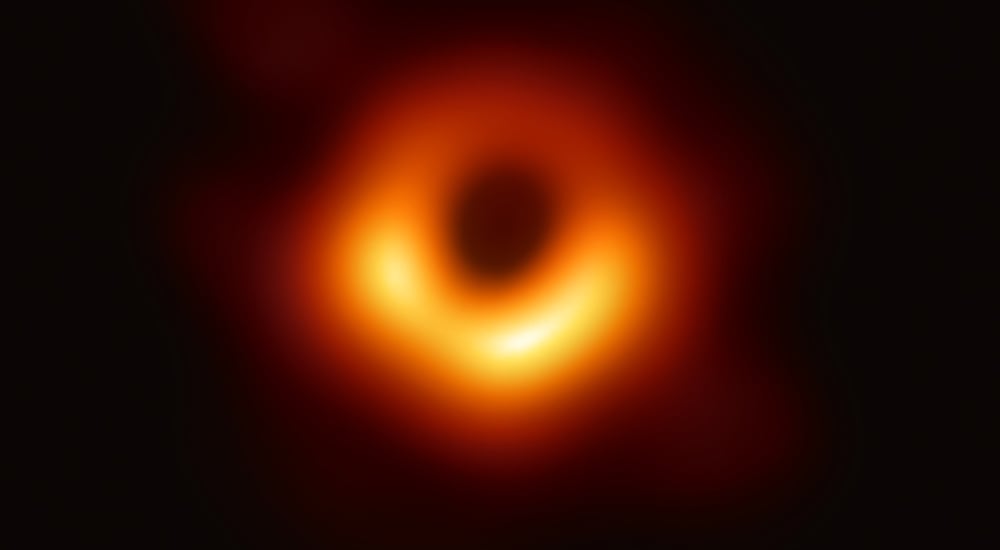The EHT is an international collaboration that coordinates observations from a global array of millimetre-wavelength radio telescopes that collectively provide unprecedented ability to resolve the event horizons of nearby supermassive black holes.
The EHT will collect a torrent of new data over the next several years, and the EHT Initiative at Perimeter aims to be the world’s foremost hub for analysis of this data. This analysis will include:
- Estimation of systematic errors imposed by the uncertain astrophysical modelling of the global structure and microphysics of accretion flows
- Expansion of the classes of parameterized astrophysical models
- Quantitative exploration of the ability of short-timescale variability to constrain key properties of accretion, and how it may be exploited to probe the near-horizon spacetime structure
Central to this work will be postdoctoral researchers capable of immediately contributing to complex astrophysical and astronomical analyses, working closely with a growing number of graduate and PhD students specializing in the field.
News highlights
Black Hole Hunters —The New York Times
"Aiming to make the first portrait of the hungry monster at the centre of our galaxy, astronomers built a telescope as big as the world." Read the whole story.
Explosive expansion at the EHT
In 2017, successful experiments with the South Pole Telescope, Atacama Large Millimeter Array, and the Large Millimeter Telescope brought these new critical stations into the array. These additions are crucial to the direct imaging of the black holes at the centre of the Milky Way and M87. See some of the coverage:
- Astronomers may finally have the first picture of a black hole (National Geographic)
- Imaging and imagining black holes (Nature)
- Global telescope may finally see the event horizon of our galaxy's giant black hole (Science)
- Event Horizon Telescope ready to image black hole (BBC News)
- How a global network of telescopes may give us first glimpse of a black hole (PBS newshour)
- Event horizon snapshot due in 2017 (BBC News)
- A sharp view into black holes (Astronomy.com)
- Planet-sized telescope gives a sharp view into black holes (Astronomynow.com)
- Virtual telescope readies to image black hole's ring of fire (Discovery News)
- Earth-sized virtual telescope to study supermassive black hole at centre of Milky Way (Gizmag)
EHT Provides Best Evidence for Black Holes
The defining feature of a black hole is the event horizon. However, despite being a robust prediction of general relativity and the plethora of observational evidence for compact, massive objects at the hearts of galaxies and in some X-ray binaries, direct evidence for their existence is hard to come by. This has changed now that the EHT has been able to probe the horizon-scale structure of two black holes, providing compelling cases for the absence of a photosphere, and thus presumably for a horizon. That means that there are at least two "black holes" in the universe, lying at the centres of the Milky Way and the giant elliptical galaxy M87. Read more in this paper and in Sky & Telescope.
EHT 2014
In November 2014, 200 scientists from around the world attended the EHT 2014 conference at Perimeter Institute. During the week-long gathering, they discussed the opportunities presented by the EHT, the technological hurdles yet to be overcome, and the collaborative opportunities that await as the EHT project reaches its full potential. Conference details.
Confronting Einstein with the EHT
Perimeter researchers are trying to find out how far one can tweak general relativity and still end up with the universe we observe. Their method? Adding "hair" to black holes. Read the full article.
Researchers: | Former members: |
|
|
- EHT closes in on how to launch relativistic jets
- Monsters do exist! Event horizons found in second black hole
- Nailing down the Galactic Centre story -- relating horizon-scale structure to the Milky Way
- How the EHT is looking through the galactic fog
- Seeing spots: spatially resolving small polarized flares around Sgr A*
- How to make a picture with the EHT
- Confronting Einstein with the EHT
